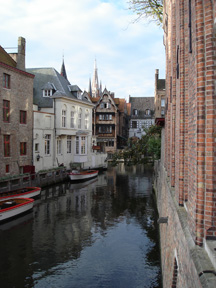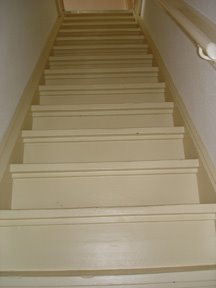 For our first-time ever in Paris, we took a quick weekend trip with the goal of just getting familiar with the city--we know we'll be back and we didn't want to kill ourselves trying to see everything. The train only takes about 3 hours from Rotterdam. It was packed on a Friday afternoon. We landed at the hotel early in the evening and ventured out to find a place to eat. We had looked up some seafood restaurants and were disappointed to find the one closest to the hotel had closed. Lesson learned: internet reviews aren't always up-to-date! We found ourselves settling for a "portuguese" brasserie ... not the best but it did the trick. We spent the rest of the evening wandering around. The (old) opera house looks great at night! Also, they have Starbucks in Paris so we stopped in to get some coffee beans ... a little taste of home.
For our first-time ever in Paris, we took a quick weekend trip with the goal of just getting familiar with the city--we know we'll be back and we didn't want to kill ourselves trying to see everything. The train only takes about 3 hours from Rotterdam. It was packed on a Friday afternoon. We landed at the hotel early in the evening and ventured out to find a place to eat. We had looked up some seafood restaurants and were disappointed to find the one closest to the hotel had closed. Lesson learned: internet reviews aren't always up-to-date! We found ourselves settling for a "portuguese" brasserie ... not the best but it did the trick. We spent the rest of the evening wandering around. The (old) opera house looks great at night! Also, they have Starbucks in Paris so we stopped in to get some coffee beans ... a little taste of home.Of course, we were still hungry, and as we were walking we came across a very small restaurant with a window open to the street. Through this window was a small oyster bar -- all it took was a quick glance and Rochelle was hooked. We went in and struggled to ask the hostess (who spoke little english) if we could
 just have oysters-no dinner. After asking the chef for help interpreting, she took us upstairs to a small dining room. There were quite a few people there, including a pair of very posh-looking women with their little dogs. An older couple sat next to us and ordered the seafood tower -- incredible to see people ripping apart crab legs and lobster tails late in the evening (Paris, like New York, seems to operate on a totally different time zone).
just have oysters-no dinner. After asking the chef for help interpreting, she took us upstairs to a small dining room. There were quite a few people there, including a pair of very posh-looking women with their little dogs. An older couple sat next to us and ordered the seafood tower -- incredible to see people ripping apart crab legs and lobster tails late in the evening (Paris, like New York, seems to operate on a totally different time zone).Rochelle had noticed a picture of Gerard Depardieu in the stairwell but we didn't think anything of it. The next day when we were asking about dinner reco's at the hotel, we told the concierge where we had been, and he said "Oh, you went to Gerard Depardieu's restaurant!" Not that we're so impressed, but we had no idea that our little "find" was actually one of the most popular spots in town!
The next day we spent doing one of our favorite things -- playing tourist on the double-decker bus. These hop-on, hop-off buses are a great way to get to know a city ... we'd go for a few stops, get off and walk around an area, get back on and do the same. We walked down the Champs
 Elysee (a lot like the Mag Mile in Chicago) to the Arc du Triomphe and explored the Latin Quarter. We found a great little market area while we were looking for (another) seafood restaurant - this time it was open. We went by Notre Dame and the Eiffel Tower, but the queues were so long (even in November!) that we decided we'd save them for a different day. It's incredible how crowded it was just walking down the streets during the evening.
Elysee (a lot like the Mag Mile in Chicago) to the Arc du Triomphe and explored the Latin Quarter. We found a great little market area while we were looking for (another) seafood restaurant - this time it was open. We went by Notre Dame and the Eiffel Tower, but the queues were so long (even in November!) that we decided we'd save them for a different day. It's incredible how crowded it was just walking down the streets during the evening.Sunday we planned to go the the Musee de Orsay but ...
 you guessed it ... the line was so long we decided that we'd do some more exploring and people watching. Double decker tours are so much fun, particularly in the rain with some champagne. So it was a nice trip and now we feel like we know the city and are smart enough to do some planning ahead for the sights for the next trip.
you guessed it ... the line was so long we decided that we'd do some more exploring and people watching. Double decker tours are so much fun, particularly in the rain with some champagne. So it was a nice trip and now we feel like we know the city and are smart enough to do some planning ahead for the sights for the next trip.




























